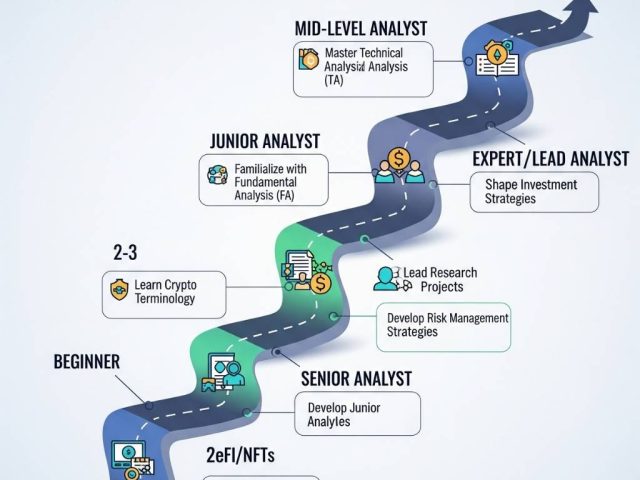The financial landscape is undergoing a significant transformation, with blockchain technology and cryptocurrencies increasingly moving from the periphery to the mainstream. By 2025, the integration of digital assets into various financial activities, including payments, has become more pronounced. Receiving payments in cryptocurrency is no longer a niche concept but a viable option for individuals seeking alternative income streams and businesses aiming to enhance efficiency and tap into a broader global market. This report provides a comprehensive analysis of the methods, motivations, advantages, disadvantages, adoption trends, legal and tax considerations, security protocols, and popular cryptocurrencies involved in getting paid in crypto in 2025. Understanding these facets is crucial for anyone considering or currently utilizing this evolving payment method.
Methods to Receive Cryptocurrency Payments in 2025:
Several methods have emerged to facilitate the receipt of cryptocurrency payments, catering to different needs and levels of technical expertise.
Direct wallet transfers represent the foundational method for cryptocurrency transactions. This process involves the payer directly sending cryptocurrency to the recipient’s unique digital wallet address, also known as a public key 1. For individuals or businesses to utilize this method, the recipient must first establish a secure cryptocurrency wallet, which can be in the form of software on a computer or mobile device, or a dedicated hardware device 1. Once a wallet is set up, the recipient needs to securely share their public address with the payer. This method operates on a peer-to-peer basis on the blockchain network, often resulting in lower transaction fees compared to traditional financial intermediaries 1. The simplicity of direct wallet transfers makes it particularly suitable for small, infrequent payments or transactions between individuals who are already familiar with the intricacies of cryptocurrency 1. However, the security of this method is heavily reliant on the user’s diligent management of their private keys, which are essential for accessing and controlling the funds within the wallet 3. Losing these private keys can lead to the permanent loss of the associated cryptocurrency holdings 3. Therefore, it is paramount for recipients to exercise extreme caution and ensure they are sharing the correct public address with the payer, as errors in this process can be irreversible 5.
Crypto payment processors have emerged as crucial intermediaries, particularly for businesses looking to accept cryptocurrency payments from a wider customer base, including those who may not be deeply familiar with digital assets 6. These platforms function similarly to traditional payment processors but are specifically designed to handle various digital currencies, such as Bitcoin and Ethereum 6. They streamline the process of accepting crypto payments, offering advantages for businesses such as access to a growing demographic of crypto-savvy consumers and often lower transaction fees compared to conventional card payment systems 7. Furthermore, these processors typically offer seamless integration with existing e-commerce platforms through the use of plugins and application programming interfaces (APIs) 6. Prominent crypto payment gateways expected to be widely utilized in 2025 include Cryptomus, Stripe, Cryptix, NOWPayments, CoinGate, and BitPay 6. A significant feature offered by many crypto payment processors is the option for automatic conversion of received cryptocurrency into fiat currency 6. This functionality addresses a key concern for businesses that may be hesitant to hold volatile crypto assets, allowing them to receive payments in digital currencies while settling in a more stable local currency. The increasing availability of white-label crypto payment gateways further empowers businesses by enabling them to offer crypto payment options under their own brand, fostering customer trust and maintaining brand consistency 7. This approach allows businesses to tap into the burgeoning crypto market without the need for substantial upfront investment in developing their own infrastructure. The broad support for various cryptocurrencies, including stablecoins, and the ease of integration with popular e-commerce platforms enhance the accessibility and usability of crypto payments for businesses across diverse sectors 6.
Cryptocurrency payroll services cater to the growing demand from employers looking to pay salaries and wages to their employees and freelancers using digital currencies 10. These specialized services act as a bridge between traditional payroll systems and the world of cryptocurrency. Services like Bitwage often allow employees to specify the cryptocurrency and the percentage of their salary they wish to receive in crypto, while employers can continue to pay in traditional fiat currency 10. Leading platforms in the crypto payroll space in 2025, such as Rise and Deel, offer comprehensive solutions that include features like global compliance, flexible payment options encompassing both fiat and crypto, and automated handling of tax implications 10. A notable trend is the increasing adoption of hybrid payroll solutions, which provide employees with the flexibility to receive a portion of their earnings in cryptocurrency for potential investment or spending, while the remaining portion is paid in fiat currency to cover regular living expenses 11. This approach accommodates the varying financial needs and risk appetites of employees. Furthermore, crypto payroll services can significantly streamline and reduce the costs associated with international payroll, proving particularly beneficial for companies with globally distributed teams 11. The inherent borderless nature of blockchain technology eliminates many of the fees and delays typically associated with traditional international money transfers. When selecting a crypto payroll service, businesses should prioritize factors such as robust security measures (non-custodial options, where the service does not hold the funds, are often preferred), ease of integration with existing human resources and accounting systems, transparent pricing structures, support for a wide range of cryptocurrencies, and reliable customer support 10. These considerations are crucial for ensuring a smooth, efficient, and secure payroll process while mitigating potential risks associated with this relatively new payment method.
Why Get Paid in Cryptocurrency in 2025?
The decision to get paid in cryptocurrency in 2025 is driven by a variety of factors for both individuals and businesses, stemming from the unique characteristics and potential benefits offered by digital assets.
For individuals, the allure of receiving income in cryptocurrency is multifaceted. Lower transaction fees, especially for international transfers, present a significant advantage compared to the often substantial charges levied by traditional banking systems and money transfer services 1. Cryptocurrency transactions can also be processed much faster than traditional bank transfers, with many settling almost instantaneously, regardless of geographical boundaries 1. Beyond the immediate benefits of cost and speed, the potential for investment growth is a key motivator. While cryptocurrencies are known for their volatility, this characteristic also presents the opportunity for substantial financial gains if the value of the received cryptocurrency appreciates over time 1. The decentralized nature of cryptocurrencies, operating outside the control of governments and traditional financial institutions, offers a sense of freedom and autonomy that appeals to many 1. This decentralization can also be seen as a hedge against inflation in regions with unstable fiat currencies 15. Moreover, cryptocurrencies are globally accessible, making them a viable option for individuals in countries with limited banking infrastructure or volatile economies 1. The enhanced privacy offered by some cryptocurrencies, where transactions are recorded on a public ledger but personal identities are not directly linked, is another factor driving adoption 1. Ultimately, the desire for greater control over one’s finances and a belief in the transformative potential of digital assets are significant drivers for individuals choosing to receive their income in cryptocurrency 1. This reflects a growing trend of seeking more decentralized and potentially higher-yield financial alternatives.
Businesses, too, find compelling reasons to embrace cryptocurrency for payments in 2025. Accepting crypto opens doors to a wider customer base, including the burgeoning global community of cryptocurrency users 2. The lower transaction costs associated with cryptocurrency payments, especially in comparison to credit card processing fees and international wire transfer charges, can lead to significant savings for businesses, particularly those with high transaction volumes or international operations 1. The speed and efficiency of cryptocurrency for international payments can streamline business operations and improve cash flow 2. Furthermore, the inherent security features of blockchain technology and the elimination of chargeback risks associated with cryptocurrency transactions offer enhanced financial protection for businesses 1. Accepting cryptocurrency can also position a business as innovative and forward-thinking, attracting tech-savvy customers and potentially providing a competitive edge 2. For businesses seeking to expand their brand and reach new markets, offering cryptocurrency payments can be a valuable marketing tool 8. The increasing institutional adoption of cryptocurrencies lends greater legitimacy to this payment method, encouraging more businesses to explore its potential 17. Finally, the growing prevalence of stablecoins, which mitigate the price volatility typically associated with cryptocurrencies, makes accepting digital assets a more practical and appealing option for businesses concerned about value fluctuations 2.
The Advantages of Receiving Cryptocurrency Payments:
Receiving cryptocurrency payments in 2025 offers a range of distinct advantages for both individuals and businesses, contributing to its growing appeal as an alternative to traditional payment methods.
One of the most significant benefits is the potential for lower transaction fees. Traditional payment processors and credit card companies often impose fees ranging from 2% to 4% per transaction 8. In contrast, cryptocurrency payment gateways frequently reduce this to less than 1%, leading to substantial cost savings, especially for businesses processing a high volume of transactions 8. This reduction in fees can directly translate to increased profitability for businesses and more value for individuals receiving payments.
Cryptocurrency transactions are also characterized by faster processing times. While traditional bank transfers, particularly international ones, can take several days to settle 2, cryptocurrency payments can often be completed within minutes, regardless of the geographical distance between the sender and the recipient 2. This speed can be particularly advantageous for businesses involved in international trade or for individuals sending remittances across borders.
Access to a global market is another key advantage. Cryptocurrencies transcend geographical boundaries, enabling seamless cross-border transactions without the complexities and costs associated with currency exchange rates and international banking fees 1. This global accessibility allows businesses to effortlessly tap into international markets and cater to a wider customer base.
Cryptocurrencies also offer increased financial inclusion. They provide access to financial services for individuals worldwide, particularly those in underbanked or unbanked regions who may not have access to traditional banking systems 2. With just an internet connection, individuals can participate in the cryptocurrency economy, sending and receiving money without relying on traditional intermediaries.
For individuals receiving salary in cryptocurrency, there is the potential for higher returns if the value of the cryptocurrency appreciates 1. However, it is crucial to acknowledge that this potential for higher returns is accompanied by a higher degree of volatility, meaning the value of the received cryptocurrency can also decrease significantly.
Cryptocurrencies provide greater control over funds due to their decentralized nature. Unlike traditional currencies that are subject to control by governments and central authorities, cryptocurrency users have more direct control over their money, free from unexpected policy changes or bank restrictions 1.
Blockchain technology, which underpins most cryptocurrencies, offers enhanced security and privacy. Transactions are secured through advanced encryption methods and recorded on a public, immutable ledger, making them highly resistant to fraud and tampering 1. While transactions are transparent and publicly verifiable, the identities of the users are often pseudonymous, providing a degree of privacy.
Finally, the elimination of chargebacks is a significant advantage for businesses accepting cryptocurrency payments. Once a cryptocurrency transaction is confirmed on the blockchain, it is final and cannot be reversed, protecting businesses from fraudulent chargeback claims that can cost them billions of dollars annually 8.
The Disadvantages and Risks of Cryptocurrency Payments:
Despite the numerous advantages, receiving cryptocurrency payments in 2025 also entails several disadvantages and risks that individuals and businesses must carefully consider.
Price volatility remains a significant concern. The value of cryptocurrencies can fluctuate dramatically and rapidly, meaning the real value of a payment received today could decrease substantially tomorrow 1. For instance, Bitcoin experienced a significant price drop in early 2025, highlighting the potential for such fluctuations to impact the value of crypto earnings 8. This volatility can make financial planning and budgeting challenging for both individuals and businesses.
Regulatory uncertainty poses another considerable risk. The legal and regulatory landscape for cryptocurrencies is still evolving and varies significantly across different countries and regions 2. This lack of clear and consistent regulations can create compliance challenges and uncertainties for those receiving and using cryptocurrency payments.
Potential tax complexities are also a major disadvantage. The taxation of cryptocurrencies can be intricate and vary depending on the jurisdiction 2. In the United States, for example, the IRS treats cryptocurrency as property, leading to capital gains or ordinary income tax implications depending on the nature of the transaction 27. Similarly, countries like India have implemented specific tax rules for cryptocurrency income and transactions 34. Navigating these tax obligations requires careful record-keeping and often the assistance of tax professionals.
Security risks are a persistent threat in the cryptocurrency space. These risks include the hacking of cryptocurrency exchanges and digital wallets, leading to significant financial losses 2. The Bybit hack in February 2025, resulting in the theft of approximately $1.5 billion in Ethereum, serves as a stark reminder of the scale of such security breaches 39. Individuals also face the risk of losing their private keys, which are essential for accessing their cryptocurrency holdings, resulting in the permanent loss of funds 3. Phishing scams, fake wallets, and other malicious activities are also prevalent, targeting cryptocurrency users to steal their assets 4.
The irreversibility of cryptocurrency transactions is another significant risk. Once a transaction is confirmed on the blockchain, it is typically irreversible, offering limited recourse for errors in sending funds or in cases of fraud or scams 4. This lack of traditional consumer protections, such as the ability to dispute charges as with credit cards, can be a major drawback 2.
Furthermore, understanding and using cryptocurrency requires a certain level of technical knowledge. Setting up wallets, managing private keys, and navigating the complexities of blockchain technology can be a barrier to entry for some individuals and businesses 2.
The increasing sophistication and frequency of cryptocurrency hacks underscore the ongoing need for robust security measures and constant vigilance from users 4. Even established cryptocurrency exchanges are not immune to attacks, emphasizing the importance of individual responsibility in securing digital assets. Additionally, the potential for cryptocurrency to be exploited for illicit activities raises concerns about compliance with anti-money laundering (AML) regulations and could lead to increased scrutiny from regulatory bodies 49. The anonymity features offered by some cryptocurrencies can attract malicious actors, potentially resulting in stricter regulations and more stringent compliance requirements for legitimate users and businesses.
Cryptocurrency Payment Adoption Trends in 2025:
The year 2025 marks a period of significant growth and increasing mainstream acceptance of cryptocurrency for payments, with notable trends emerging across individual ownership and business adoption.
Global cryptocurrency ownership has witnessed a substantial surge, exceeding 560 million users worldwide in 2024 and projected to reach an estimated 861 million users in 2025 24. This represents a considerable portion of the global population embracing digital assets. In the United States, cryptocurrency ownership has also seen remarkable growth, with approximately 28% of American adults, equating to around 65 million individuals, holding cryptocurrencies in 2025 24. Projections indicate that the number of cryptocurrency users in the US is expected to approach 100 million by the end of 2025 24. Europe, as the second-largest cryptocurrency market globally, is also experiencing significant adoption, with the number of crypto users expected to surpass 218 million in 2025 24.
The acceptance of cryptocurrency as a payment method by businesses is also on the rise. While traditional payment methods like credit cards continue to dominate, accepted by over 75% of businesses in 2024 50, the adoption of crypto payments is steadily increasing, particularly within the online retail sector. It is estimated that roughly 25% of online retailers accept cryptocurrency as a form of payment in 2025 19. This growing trend is driven by the increasing demand from consumers, especially younger generations like Gen Z and Millennials, nearly 40% of whom prefer to shop at stores that accept crypto 19. The total market value of cryptocurrencies also reached a significant milestone, exceeding $3 trillion for the first time in November 2024 24. Furthermore, on-chain transaction volumes for major cryptocurrencies like Bitcoin and Ethereum have seen an average annual growth rate of 25-30% from 2020 to 2025, reflecting the increasing utility of digital assets in both retail and institutional settings 52.
Stablecoins have emerged as a particularly popular option for payments due to their price stability. In 2024, stablecoins became the most popular crypto asset class, representing more than two-thirds of all cryptocurrency transactions 24. This preference for stablecoins highlights a growing desire for the benefits of cryptocurrency payments without the volatility typically associated with other digital assets.
The substantial increase in both individual ownership and business acceptance of cryptocurrency strongly suggests a continued trend towards the mainstreaming of crypto payments in 2025 21. This growth is fueled by increasing awareness, advancements in user-friendly technologies, and a growing comfort level with digital assets as a viable form of payment. The pronounced preference of younger, digitally native generations for crypto payments indicates that this trend is likely to persist and further accelerate in the years to come.
Legal and Tax Implications of Receiving Cryptocurrency Payments in 2025:
The legal and tax implications of receiving cryptocurrency payments in 2025 are region-specific and continue to evolve as regulatory bodies grapple with the complexities of digital assets. Understanding these implications is crucial for compliance and financial planning.
In the United States, the Internal Revenue Service (IRS) classifies cryptocurrencies as property, not currency 27. This classification has significant tax implications. Receiving cryptocurrency as payment for goods or services is generally considered taxable income, subject to ordinary income tax based on the fair market value of the cryptocurrency at the time of receipt 10. When this cryptocurrency is later sold, exchanged, or used to make a purchase, it can trigger a capital gain or loss, depending on the difference between the value at receipt and the value at the time of disposal 27. The tax rates for capital gains vary depending on how long the cryptocurrency was held (short-term vs. long-term) and the individual’s overall taxable income 27. Certain transactions, such as transferring cryptocurrency between wallets owned by the same individual or receiving it as a gift (up to $19,000 in 2025), are generally not taxable events 27. A significant development in 2025 is the implementation of Form 1099-DA, which requires all US crypto exchanges to track and report users’ digital asset sales to the IRS, starting from January 1, 2025 30.
The European Union has taken a proactive approach to regulating the crypto space with the implementation of the Markets in Crypto-Assets Regulation (MiCAR) and the Transfer of Funds Regulation, both of which came into effect in December 2024 29. MiCAR introduces licensing requirements for companies issuing or trading cryptocurrencies, aiming to protect investors and ensure financial stability 29. The Transfer of Funds Regulation extends anti-money laundering (AML) rules to crypto-asset transfers, requiring service providers to collect and make available information about the sender and beneficiary of transfers, regardless of the amount 29. While the EU provides a harmonized framework, individual member states may have their own specific tax regulations concerning cryptocurrency gains and income 56. Generally, most European countries treat crypto as property, taxing earnings from sale, exchange, payment, and other disposals 56.
In India, while cryptocurrency is not recognized as legal tender, trading and investing in it are legal 34. The Indian government has implemented a flat 30% tax on any income derived from the transfer of virtual digital assets (VDAs), including cryptocurrencies, without allowing deductions except for the cost of acquisition 34. Additionally, a 1% Tax Deducted at Source (TDS) is applicable on all sales of VDAs exceeding ₹50,000 (or ₹10,000 in some cases) in a financial year 34. Losses incurred from the transfer of digital assets cannot be offset against any other income 35. Starting from the fiscal year 2025-2026, mandatory reporting requirements for all crypto transactions will apply to both individuals and crypto exchanges in India 35.
The increasing regulatory scrutiny and the implementation of specific tax rules across major economies like the US, EU, and India signify a global trend towards integrating the crypto space within established financial and legal frameworks 23. This move aims to provide clarity, protect consumers, and prevent illicit activities associated with digital assets. However, the lack of a universally consistent approach to cryptocurrency regulation and taxation creates complexities for individuals and businesses involved in cross-border crypto payments, necessitating careful attention to the specific rules and requirements of each relevant jurisdiction 2.
Security Measures and Best Practices for Managing Cryptocurrency Payments in 2025:
Ensuring the security of cryptocurrency payments is paramount for both individuals and businesses. Implementing robust security measures and adhering to best practices can significantly mitigate the risks associated with digital assets.
Utilizing secure and reputable cryptocurrency wallets is the first line of defense. Users should understand the difference between hot (online) wallets, which offer convenience but are more susceptible to online attacks, and cold (offline) wallets, which provide a higher level of security for storing larger amounts of cryptocurrency 1. Implementing strong, unique passwords for all crypto-related accounts and enabling multi-factor authentication (2FA) adds an extra layer of security against unauthorized access 4. Users should be highly vigilant about common cryptocurrency scams, including phishing attempts that try to trick them into revealing sensitive information, fake wallets designed to steal funds, Ponzi schemes promising unrealistic returns, and rug pulls where project developers abscond with investors’ money 3.
Securely storing and never sharing private keys or seed phrases is absolutely critical. These are essentially the keys to accessing cryptocurrency holdings, and their compromise can lead to irreversible loss of funds 3. Offline storage methods, such as hardware wallets or securely written-down seed phrases kept in a safe place, are highly recommended, especially for significant amounts of cryptocurrency. Before sending any cryptocurrency payment, users should always double-check the recipient’s address to ensure accuracy, as these transactions are typically irreversible 4. Choosing reputable and well-established crypto payment processors and payroll services with a strong track record of security and compliance is also essential for businesses 4. Keeping all software, including operating systems, antivirus programs, and wallet applications, up to date is crucial for protecting against known vulnerabilities that cybercriminals might exploit 4.
Employing a layered security approach that combines strong passwords, 2FA, secure wallets, and a healthy skepticism towards unsolicited offers is the most effective way to safeguard cryptocurrency assets 1. No single security measure is entirely foolproof, so a combination of practices provides a more robust defense. Regularly backing up wallet data and understanding the recovery process are also vital to avoid losing access to funds in case of technical issues or loss of devices 3 (implicitly suggest this). Having a backup ensures that funds can be recovered even if the primary access method is compromised or lost. Awareness and education about the ever-evolving landscape of cryptocurrency scams are also crucial for preventing financial losses 3. Scammers are constantly refining their tactics, and staying informed helps individuals and businesses recognize and avoid fraudulent schemes.
Popular and Widely Accepted Cryptocurrencies for Payments in 2025:
The landscape of popular cryptocurrencies for payments in 2025 is diverse, with different digital assets offering unique characteristics that make them suitable for various use cases.
Bitcoin (BTC) remains the original and most widely recognized cryptocurrency, boasting the highest market capitalization 8. Its widespread acceptance makes it a viable option for larger transactions and as a store of value, although its transaction speed can be slower and fees higher compared to some other cryptocurrencies, particularly for smaller, everyday payments 14.
Ethereum (ETH) is another highly popular cryptocurrency, known for powering a vast ecosystem of decentralized applications (dApps) and smart contracts 8. It is a preferred choice for businesses integrating blockchain-based applications, but its transaction fees can fluctuate significantly based on network congestion 18.
Stablecoins, such as USD Coin (USDC), Tether (USDT), and Euro Coin (EURC), are pegged to fiat currencies like the US dollar or Euro, providing price stability and significantly lower volatility compared to other cryptocurrencies 2. This stability makes them particularly well-suited for everyday transactions and businesses seeking to avoid the price fluctuations associated with more volatile cryptocurrencies.
Solana (SOL) has gained significant traction for payments due to its remarkable transaction speed and exceptionally low costs 1. Its infrastructure is particularly well-suited for high-volume payment processing, making it increasingly popular in tech-focused sectors and e-commerce.
Litecoin (LTC) offers faster transaction speeds and lower fees compared to Bitcoin, positioning it as a practical option for online retail and smaller, more frequent transactions 18.
Dash (DASH) focuses on providing enhanced transaction privacy and near-instant payment confirmations, appealing to users and businesses that prioritize these features 18.
TRON (TRX) is optimized for fast and low-cost transactions, making it a good choice for smaller payments, microtransactions, and subscription-based services 18.
XRP (Ripple) is specifically designed for efficient cross-border payments, making it a valuable option for businesses with an international clientele and for facilitating global remittances 18.
The optimal choice of cryptocurrency for payments in 2025 is often contingent upon the specific use case and the priorities of both the payer and the recipient 18. Factors such as the desired transaction speed, the acceptable cost of fees, the need for price stability, and the level of widespread acceptance all play a crucial role in this decision. For businesses, a practical strategy often involves accepting a diverse range of popular cryptocurrencies and utilizing a payment processor that offers the capability to automatically convert these digital assets into a preferred fiat currency 8. This approach allows businesses to cater to a broader customer base within the cryptocurrency ecosystem while effectively managing the risks associated with the inherent volatility of individual digital assets.
Conclusion:
Getting paid in cryptocurrency in 2025 presents a compelling set of opportunities alongside significant challenges. The methods for receiving crypto payments have matured, offering options like direct wallet transfers, the convenience of crypto payment processors, and specialized payroll services. The motivations for individuals and businesses to embrace this payment method are strong, driven by factors such as lower fees, faster transactions, and access to a global market. While the advantages, including increased financial inclusion and greater control over funds, are attractive, the disadvantages and risks, particularly price volatility, regulatory uncertainty, and security threats, cannot be ignored.
The adoption of cryptocurrency payments is undeniably on the rise, with a growing number of individuals and businesses integrating digital assets into their financial transactions. However, the legal and tax implications remain complex and vary significantly across different regions, requiring careful attention and compliance. Implementing robust security measures and adhering to best practices are crucial for safeguarding cryptocurrency assets and mitigating the risk of scams and hacks.
Ultimately, the decision to get paid in cryptocurrency in 2025 requires a thorough understanding of the landscape, a careful assessment of individual or business needs and risk tolerance, and a commitment to staying informed about the rapidly evolving world of digital assets. While cryptocurrency payments hold the potential to revolutionize financial transactions, a balanced and informed approach is essential to navigate the opportunities and challenges that lie ahead.





